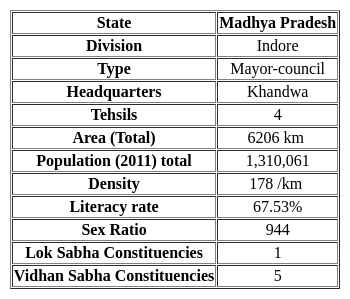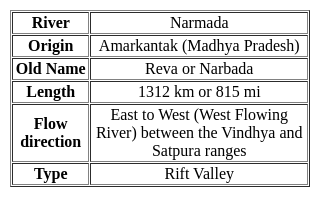MPPSC Paper 1 (GS) Mock Test - 10 - MPPSC (Madhya Pradesh) MCQ
30 Questions MCQ Test - MPPSC Paper 1 (GS) Mock Test - 10
Who secured her first global table tennis title at WTT Feeder Corpus Christi 2024 in Texas, USA?
What is India's rank on the Global Pension Index 2023?
Vaishali was the capital of which of the following Mahajanapadas?
Which of the following is not a project under the Narmada Valley Project?
Which of the following Dams is in Madhya Pradesh?
Consider the following statements about Gaur (Indian Bison).
1. It is listed as an Endangered category in the IUCN red list.
2. It is native to South and Southeast Asia.
3. Gorumara National Park is famous for its Gaur Population.
Choose the correct statements:
Where was the first Gram Nyayalaya established in MP?
Arrange the following physiographic division of India in west to east direction?
1. Baghelkhand Plateau
2. Bundelkhand Plateau
3. Vindhyan Range
4. Garjat Hills
The Damodar river originates from which of the following states?
Angor diamond mine is located in which district in Madhya Pradesh?
Kumbha mela in Ujjain held on the bank of which river?
Who was the first Chief Minister of Madhya Pradesh?
The President of India Ram Nath Kovind laid the foundation stone for the conservation works of Singorgarh Fort which is located in which state of India?
What is the objective of the MoU between the Department of Fisheries and ONDC?
In the Interim Budget 2024, which country was revealed as the top recipient of Indian aid?
Which physical division of India is a dry, hot and sandy stretch of land?
Consider the following statements with reference to the Sixth Schedule-
1. It provides for the administration of tribal areas in Assam, Meghalaya, Tripura and Mizoram to safeguard the rights of the tribal population in these states.
2. It provides for autonomy in the administration of these areas through Autonomous District Councils (ADCs).
Which of the above statements is/are not correct?
In which of the following districts is the Omkareshwar Reservior is situated?





















